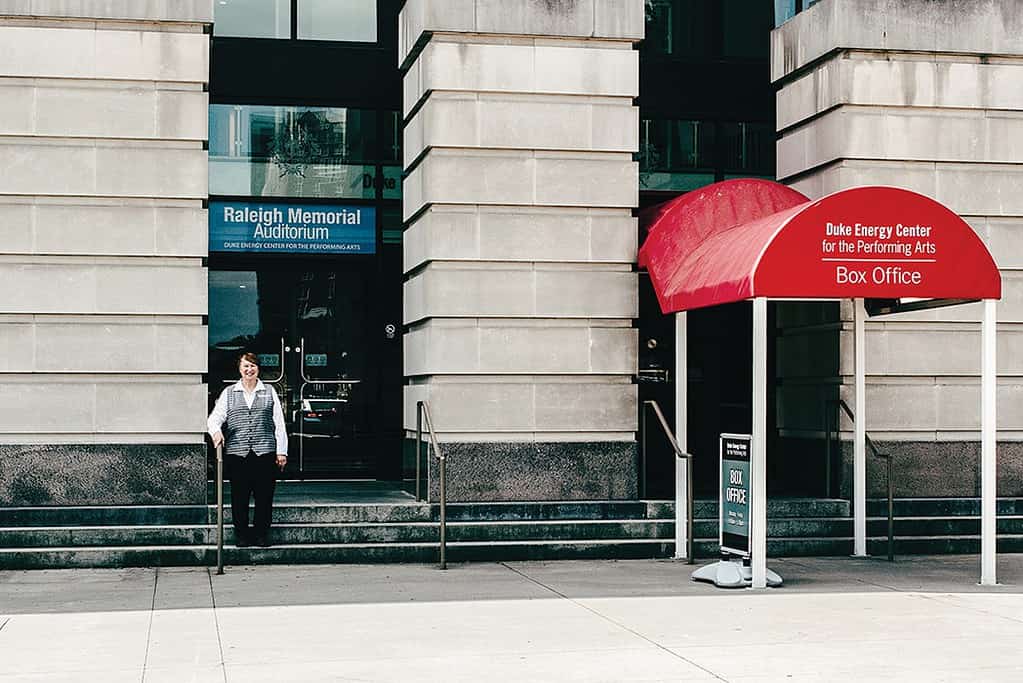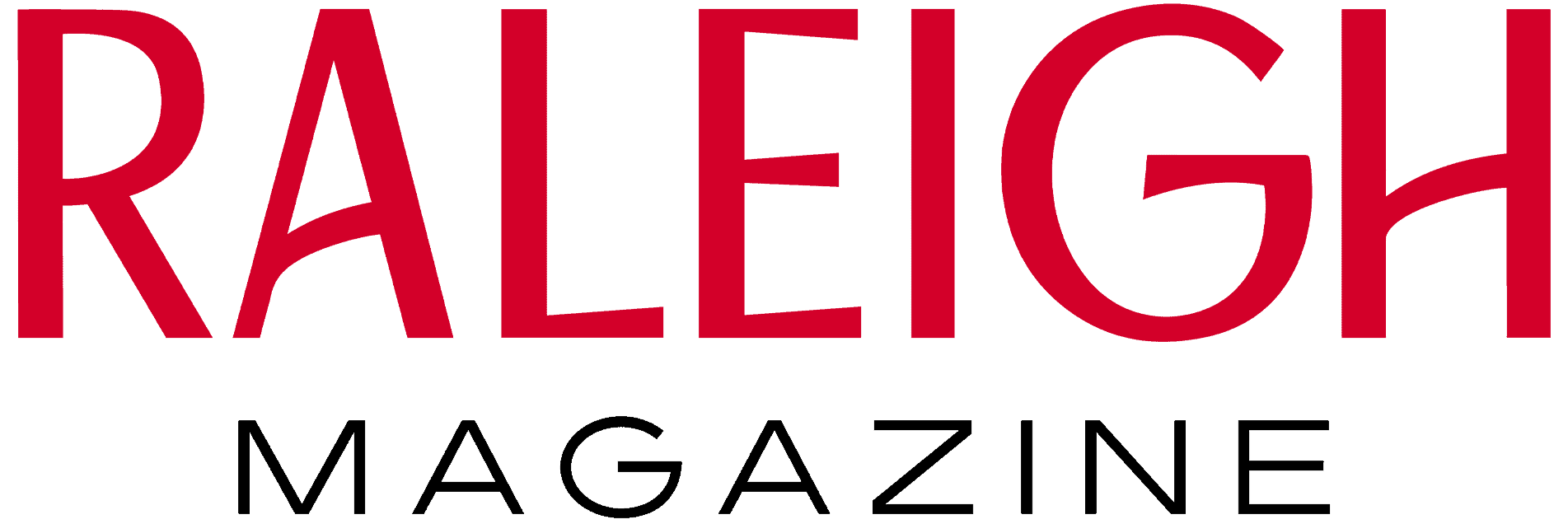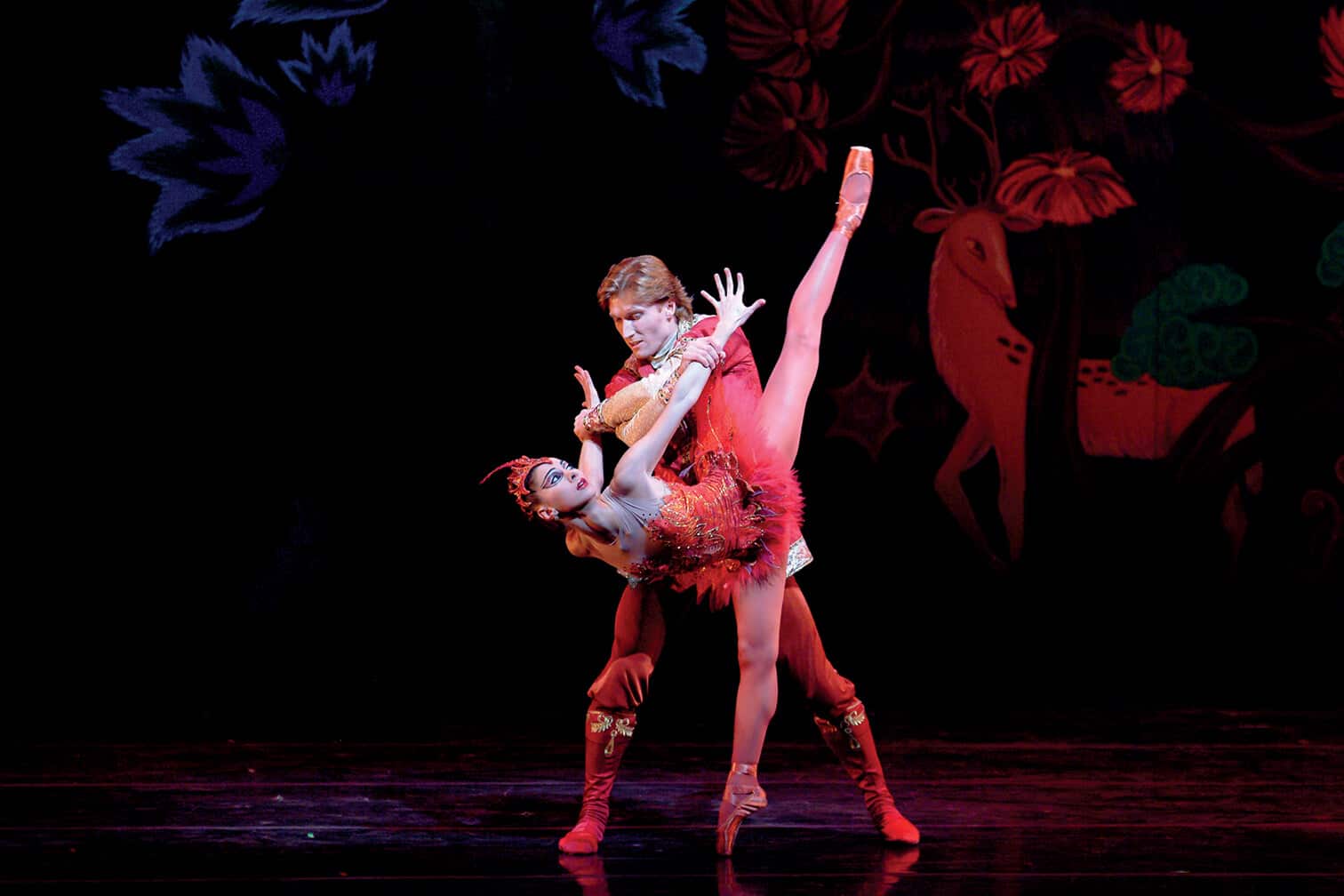Share this Post
It’s that time of the year again—when we’re content to get lost for an hour or two in the rhythms of a dance, the drama of a play, the physical world of the visual arts or the melodies of musical composition. Raleigh’s cultural scene continues to thrive and this season of arts and entertainment promises all the excitement of live shows, performances and exhibitions of seasons past, and more. In our 2019 Arts and Entertainment Guide, we highlight, along with our arts and entertainment events calendar, some of Raleigh’s connoisseurs of culture, plus a few of the folks who work behind the scenes to ensure that all the shows go on.
Cultural Ringleaders
We spoke with the folks at the forefront of Raleigh’s arts and entertainment scene.
Eric Woodall, North Carolina Theatre

Growing up in Benson, many of Eric Woodall’s firsts in theater were an hour’s drive away. One of the first professional productions he watched was “Man of La Mancha,” featuring Ira David Wood, and his introduction to performing was on Raleigh Little Theatre’s stage. At 9 years old, the theater bug had a firm hold—throughout his youth, Woodall, now NC Theatre’s artistic director, was shuttled back and forth to perform with and learn from Triangle artists.
Woodall spent nearly three decades in New York, first as an actor and then as a casting director, interspersed with stints of directing back in the South. As a casting director, Woodall helped add sinew to Broadway productions including “Phantom of the Opera,” “Les Miserables” and “Falsettos.” Collaborating with our century’s gold standard of directors and producers influenced him in a thousand ways, Woodall says, adding layers to his creative process and preparing him for the full-time plunge in Raleigh.
In his new role, Woodall oversees the artistic vision and merit of the entire theater company. Every day, he must spend time on each of the six shows NC Theatre will stage this performance season—not to mention what the company plans to produce in 2021, the conservatory (the theater’s education department) and any other shows he’s directing.
“I ain’t gonna lie,” Woodall confides, “I don’t sleep a ton. I wake up with my mind and heart racing, because I take all of this so seriously.” A firm believer in preparedness (often fueled by strong coffee), in July, Woodall already had the cast and creative team for October’s production of “West Side Story” completely locked in, headshots lining his office wall.
“I am passionate about helping North Carolina Theatre find and re-establish its identity, so that theatergoers, or even non-theatergoers, in the area can begin to know who North Carolina Theatre is, and what we do and how we do it,” Woodall says.
In the upcoming season—Woodall’s first set of selections—there will be musicals from the Golden Age, modern classics and a couple of shows few will recognize. The casts and crews are comprised mostly of Carolinians and about a dozen New Yorkers. Woodall wants audience members to come in and see theater that is discovered, rehearsed and re-imagined in their backyard.
Woodall’s task is twofold: to continue the legacy NC Theatre began (without which, he says, he would not be here) and to challenge artists and audiences. These challenges manifest in many ways, from diversity in casting to offering more scholarships for the conservatory to engaging more with the community. Another closely held hope is to produce original work that other regional theater companies (and even New York companies) potentially could perform down the line.
“We’re moving in this upward direction of new ideas and wondering ‘What is possible?’” Woodall says. “So, it’s an exciting time to be here.”
For tickets or more information, visit nctheatre.com— Megan Dohm
Valerie Hillings, North Carolina Museum of Art

Valerie Hillings is absolutely overwhelmed by the love for, and pride in, the North Carolina Museum of Art that she encounters across the state.
“I’m excited to think about NCMA as a campus as a whole and how different elements can talk to one another,” says Hillings, who’s now 10 months into her position as NCMA’s director and CEO.
A Duke University graduate and curator at the Solomon R. Guggenheim Museum and Foundation for more than 14 years, Hillings is enjoying exploring the cultural landscape at NCMA, and, now that she’s settled in, she’s honing her insight into what the museum does best, including reimagining how art is shown across time and space.
“We’re starting to ask ourselves how to install the collection to tell new stories,” says Hillings, who has focused closely on art collections throughout her career. “Starting in 2020, we’re going to start shaking up the narrative, suggesting new ideas and opening up conversation.”
The museum’s fall and spring exhibitions will bring diverse material to the public.
“The public will be getting a varied menu of experiences that will show local, national and global perspectives,” Hillings says. Scott Avett, co-founder of the band The Avett Brothers, will have a solo exhibition featuring his large-scale oil paintings beginning in October. Also in October, the museum will feature an exhibition on Mexican Modernism with works by Frida Kahlo and Diego Rivera, along with art from the Jacques and Natasha Gelman Collection.
A high point on the spring calendar is “Front Burner: Highlights in Contemporary North Carolina Painting,” beginning in March. The exhibition urges viewers to slow down from the chaos of modern life and approach the paintings with “patience, critical thinking, and an open mind and heart.” Featuring 25 emerging, mid-career and established artists from throughout North Carolina, the exhibit highlights the different perspectives in painting across our state, from Raleigh’s Brett Baker and Shaun Richards to Charlotte’s Ashley Lathe.
Hillings emphasizes the idea that not everything will be a linear progression or just about geography. From portraiture to world religion, there are different ways of looking at the collections today. One way of viewing a collection, for example, is through thematic narratives, as in March when the museum created a gallery of works solely from women artists.
“We want to get the audience to look forwards and backwards by the way we installed the collection,” Hillings says. “There are different ways of looking at collections today. I like to say that all art was once contemporary and all contemporary art will become history.”
For more information, visit ncartmuseum.org. — Tracy Jones
Zalman Raffael, Carolina Ballet

Zalman Raffael’s artistic journey began with gymnastics and a distaste for team sports and grew into a love for the power he found behind a ballet bar.
“It’s very internal, standing behind a bar, but external as well,” says Raffael, who was born and raised in New York City and received formal dance training at the School of American Ballet. “I couldn’t find a place to exert my energy until I found ballet. It helped me find myself and develop as a person.”
The 2019-20 season marks the beginning of Raffael’s role as CEO and artistic director of Raleigh-based Carolina Ballet. He takes the reins from longtime chief Robert Weiss, who is credited with the company’s success over the last two decades and will still remain involved.
“I really see the importance of not holding on so deeply to being a powerful person, but instead, to nurture the future generations,” says Raffael of his new role. “The power of art in the world contributes to the quality of our lives.”
This season, the Carolina Ballet has much to offer. From “Frankenstein” to the return of “Macbeth” to a classical production of “Cinderella” performed to live music, there’s something for everyone. This month, Carolina Ballet performs George Balanchine’s “Rubies” set to the music of Igor Stravinsky and featuring a new collaboration between Weiss and Raffael, along with Weiss’s “Thai Meditation” and his “Classical Ballet” set to the music of the Russian composer Sergei Prokofiev.
“I’m thrilled to have a partnership with the Chamber Orchestra of the Triangle,” Raffael says. “We have a live music series that’s really exciting. Robert Weiss is also teaming up with local artists for Beethoven’s ‘[Symphony No. 7].’”
For Raffael, or Zali as he’s known, being a leader in the arts world, especially in Raleigh, is meaningful. He says that while ballet doesn’t have to do with physically saving lives, it allows expression and the opportunity to look at ourselves deeply. He says his goals for the company are to continue to preserve and innovate ballet.
“I would love to continue to choreograph ballets but it’s important to bring in new choreographers and preserve the stronger ballets that have become a part of our history,” says Raffael, who has worked as a choreographer for the Carolina Ballet for more than six years. “Part of success for any dance company is to have staples, like our ‘Messiah’ or ‘Rhapsody in Blue.’”
Another goal is to find a balance of quality dancers by consistently creating ways to nurture dancers’ lives. Raffael says, for him, it’s important to make sure dancers are cared for after the performances end.
“We want to create an opportunity for employees to set up their lives and become immersed in what is Raleigh,” says Raffael. “There’s artistic growth, plus growth in the city.”
To see a full performance and events schedule, visit carolinaballet.com — Tracy Jones
en pointe
Dancers with the Carolina Balletseek out the perfect fit.

A long row of cubbies is stuffed with light pink satin pointe shoes. Dancers, both seasoned and green, slip shoes in different sizes and shapes onto their feet in search of a Cinderella moment: the perfect pair, the flawless fit. A tall, slim woman with a perfectly coiffed dark bun—a ballerina herself, and a choreographer and artistic director—greets the dancers one by one, peppering them with questions about shoe size, their preferred shape and pliability and what they’re ultimately looking for in a pointe shoe.
This is the scene in a back room at the Carolina Ballet company’s headquarters on Atlantic Avenue and the woman, Kristen Klein, is a custom pointe shoe fitter for the storied dance shoe design and manufacturing company Freed of London. Freed, founded in the British capital in 1929, has supplied Carolina Ballet with shoes since it launched as a professional company in 1998; each year, Klein travels to Raleigh to facilitate custom fittings for Carolina Ballet’s dancers.
“They require so much from their shoes,” Klein says. “They’re their tools—they need them so they can do their jobs.”
Freed’s pointe shoes are all handmade by (mostly British) cobblers. Compared to other pointe shoes on the market, Freed’s designs are traditional, constructed out of satin on the outside and a canvas and burlap lining on the inside. The block of the shoe, which dancers rely on to carry themselves on the tips of their toes, is made using a flour-based glue, layered with paper or more burlap and baked into the shoe in a giant oven to harden. As dancers work in the shoes over time, the block will begin to break down. But, due to the shoes’ time-honored quality of materials, they’ll also begin to mold to the dancer’s foot “like an extension of the leg,” in Klein’s words.
Each cobbler at Freed churns out 30 to 40 pairs of pointe shoes each day, and each pair is stamped with a symbol denoting the shoes’ characteristics: a triangle represents a tapered pointe shoe with a small platform; a star signifies a boxier shoe with a platform that’s larger. For the dancers, Klein organizes the shoes by shape and most of the ballerinas know their preferences. “A lot of these dancers that have worn Freed know what maker they like and it creates a special feeling for them,” Klein says. “It’s like a ‘this is my maker’ type of thing.”
While the process of finding a new pair of pointe shoes is relatively easy for Klein when she’s working with more experienced dancers, first-pair fittings can be challenging; dancers are still getting accustomed to Freed’s uniquely designed pointe shoes and learning how their feet will fit them. But, as Freed employs so many different cobblers, Klein says that 99 percent of the time, dancers can find a pair of shoes that work with their feet.
Today, this is evident. Following several rounds of try-ons, dancers test their shoes in front of mirrors. Then, they sashay out of the fitting room, away from Klein, with a promising new pair of pointe shoes in tow. The pink satin will shine from the stage; the solid blocks will carry the dancers into their new season of performance. — Lauren Kruchten
Ushering In

Lights ripple in the fountain out front. The Greek Revival structure rises into a deep blue sky. Warm light draws you indoors. Approaching downtown Raleigh’s Duke Energy Center for the Performing Arts on a performance night can feel like the whole place has been waiting just for you.
“I think it’s the most beautiful building in downtown Raleigh,” says usher Millie Bozek. “When I come here, I feel like I’m someplace special.”
Ushers are the human element to creating this welcoming feeling and, according to front-of-house manager Courtney Bisbe, the first qualification for the job is that an usher can talk easily to anyone. Follow-up traits include the ability to work hard, to be a team player and readiness to spend hours on one’s feet. To the public, ushers act as vested guardian angels, guiding the way.
Before the audience arrives, the theater is steadily preparing. While artists warm up, ushers fold inserts and take marching orders from the head usher. When Bozek was readying for her first night on the job in 2002, she arrived half an hour early, for one last chance to walk the red rows in Memorial Auditorium—the center’s largest—and test her memory of the sections.
Seventeen years of experience on the job and assisting thousands of people have stacked into quiet self-assuredness. With friendly blue eyes, a Brooklyn accent and a ready smile, Bozek is a comfortable presence. She does not particularly care what assignment she receives, or where she’s placed in or around the building. She’s there for the people. Other than the theater name and uniforms—a cranberry blazer has been exchanged for silver vests and bowties are no longer required—Bozek says not much has changed about her work.
When the tall glass doors open, ushers have manned their assigned spots. Those at the front door are the first faces patrons see. Bozek says she always tries to offer a welcome or hello, no matter how busy or rushed she is. Once the interior house doors open, the lobby and hallways are flooded with people. Some are season ticket holders who know exactly where they’re going, others are setting foot in the theater for the first time. Bozek says it’s important not to profile guests when there are multiple events in the building; sometimes the guy in blue jeans who looks like he’s headed for the bluegrass concert is actually destined for the symphony. After the audience files in, it is an usher’s job to maintain order and comfort, to be guides during necessary exits and to deal with what Bozek calls “situations,” should they arise.
“And they always have situations,” she says.
Situations include heavily perfumed patrons sitting near others with scent allergies who need re-seating, tipsy patrons and would-be backstage interlopers—all managed with tact. When the lights go down, the ushers’ navigational skills are put to the test. Bozek says it is still possible to get turned around, especially if she’s preoccupied.
At intermission, the ushers guide a flurry of coming-and-going and guard doors that would lead away to other auditoriums; once, they had a woman start out at one show, get turned around, and watch the second half of another show next door. They ring oversized brass bells to signal the end of intermission.
After the final note plays and the last bit of applause dies down, the theater empties as quickly as it filled. The ushers send their guests into the night with gratitude, appeals to come back and wishes for a safe journey home (and, for regular attendees, a quick hug). As the audience departs, the ushers finish their evening’s work. The theater resumes its waiting once again. — Megan Dohm
Check out our 2019 Fall Arts & Entertainment Calendar!
Share this Post







